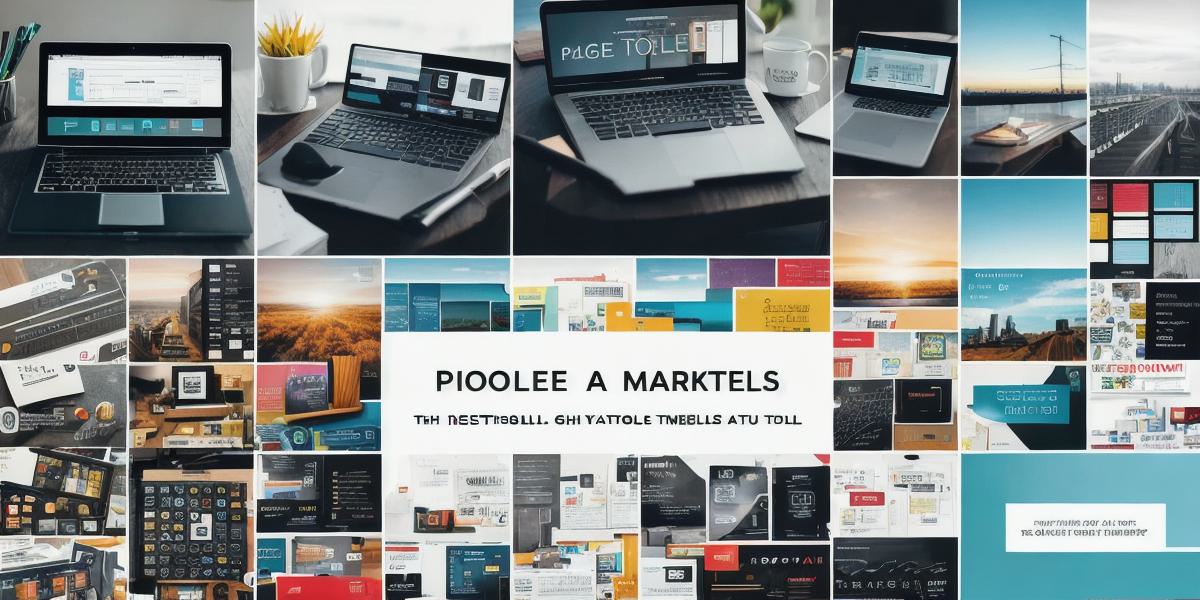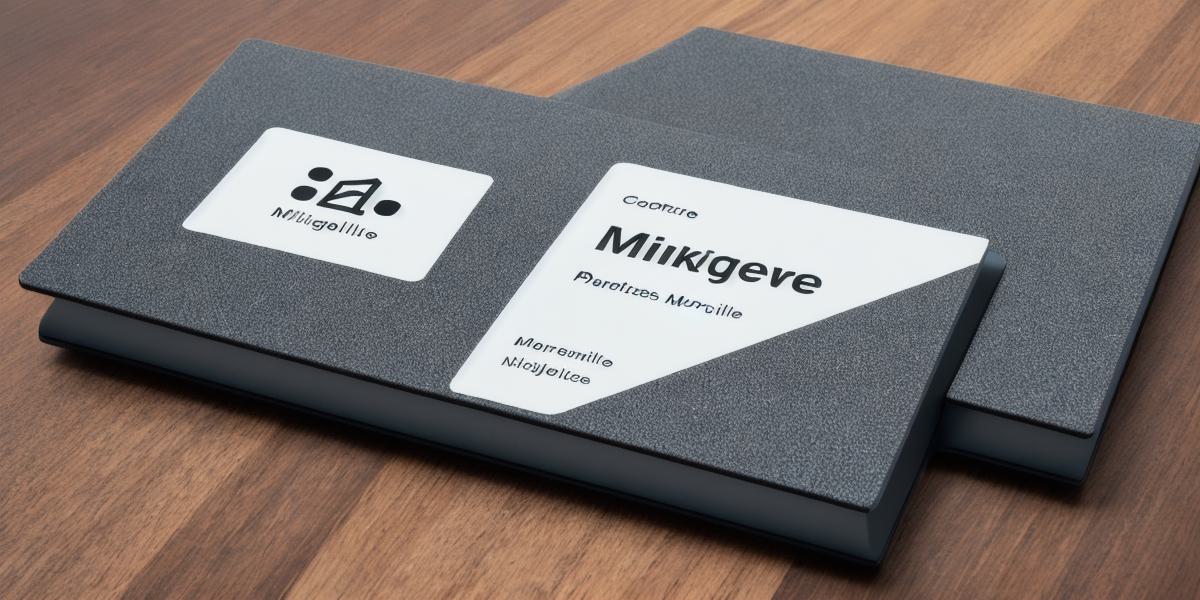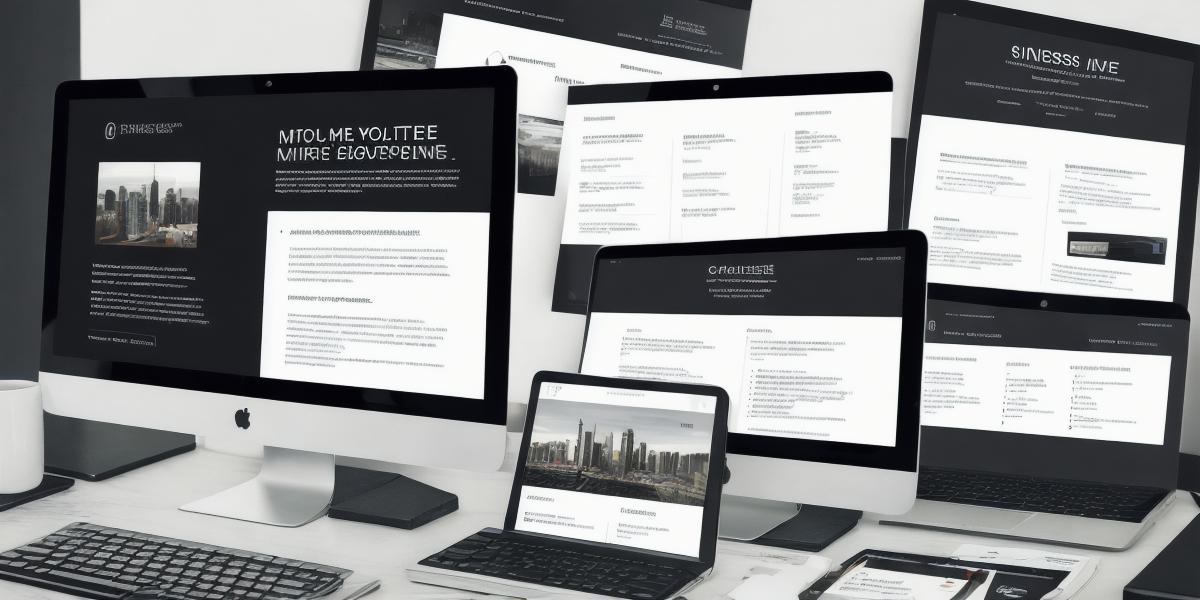Introduction
Employee engagement is a critical factor that can significantly impact an organization’s productivity, profitability, and overall success. According to Gallup, employees who are engaged in their work are 25% more likely to report being happy at work, 33% more likely to be productive, and 46% less likely to leave their company. With the increasing competition for top talent, companies must find innovative ways to keep their employees motivated and committed to achieving business goals.
Internal marketing is a powerful tool that can help organizations achieve this objective by promoting employee engagement through targeted communication, training, and development opportunities. In this comprehensive guide, we will explore the best internal marketing tools for boosting employee engagement and productivity, as well as case studies and personal experiences to illustrate their effectiveness.
1. Communication Tools
Effective communication is essential for maintaining employee engagement and productivity. It allows employees to feel connected to their colleagues and the organization, and it can help foster a sense of community and collaboration. Here are some of the best internal marketing tools that can enhance employee communication:
a) Email Marketing
Email marketing is an effective way to keep employees informed about company news, events, and updates. However, it’s important to use this tool wisely, as excessive emails can be overwhelming and lead to disengagement. Here are some tips for successful email marketing:
- Keep emails concise and to the point.
- Use clear and engaging subject lines that grab employees’ attention.
- Segment your audience based on their interests or job roles to ensure they receive relevant content.
- Include visuals such as images and videos to make emails more visually appealing.
- Provide opportunities for employees to give feedback or ask questions.
b) Social Media
Social media is a powerful tool that can be used to engage employees and foster a sense of community within the workplace. Here are some tips for using social media effectively:
- Create dedicated social media channels for different departments or teams to share their updates and progress.
- Encourage employee-generated content by providing opportunities for them to share their ideas, achievements, and challenges.
- Use social media to recognize and reward employees for their hard work and contributions.
- Provide training on how to use social media effectively to ensure employees are comfortable sharing information online.
c) Intranets
Intranets are private networks that allow organizations to share information, resources, and collaboration tools among employees. Here are some key features of effective intranets:
- A user-friendly interface that is easy to navigate and access.
- A centralized platform for sharing news, updates, and company policies.
- Collaboration tools such as discussion forums, file sharing, and project management software.
- Employee self-service features such as payroll, benefits, and time off requests.
- Recognition and reward programs to motivate employees and foster a sense of community.
2. Training and Development Tools
Investing in employee training and development is essential for boosting productivity and retaining top talent. Here are some of the best internal marketing tools that can help organizations promote learning and growth:
a) Learning Management Systems (LMS)
An LMS is a software application that allows organizations to manage, track, and report on employee training programs. Here are some key features of effective LMS:
- A centralized platform for managing training content and resources.
- Automated course enrollment, scheduling, and tracking.
- Personalized learning paths based on employees’ job roles, skills, and interests.
- Real-time reporting and analytics to measure the effectiveness of training programs.
- Gamification features to make learning fun and engaging.
b) Microlearning Platforms
Microlearning is a learning approach that involves short, focused learning experiences that can be completed in a few minutes or less. Here are some benefits of microlearning:
- Increased engagement and retention of learning content.
- Flexibility to learn at the employee’s own pace and on their own schedule.
- Cost-effective compared to traditional training methods.
- Real-time feedback and assessment to measure progress and identify areas for improvement.
c) Mentorship Programs
Mentorship programs can help employees develop new skills, gain valuable insights, and build strong relationships with colleagues. Here are some key features of effective mentorship programs:
- Pairing employees with experienced mentors who can provide guidance and support.
- Defining clear goals and expectations for the mentorship relationship.
- Providing training and resources to help mentors and mentees develop their skills.
- Encouraging regular check-ins and feedback to measure progress and identify areas for improvement.
3. Employee Recognition Tools
Recognizing and rewarding employees for their hard work and contributions is essential for boosting employee engagement and productivity. Here are some of the best internal marketing tools that can help organizations promote recognition and reward programs:
a) Employee Recognition Platforms
Employee recognition platforms allow organizations to recognize and reward employees for their achievements, milestones, and contributions. Here are some key features of effective employee recognition platforms:
- A centralized platform for recognizing and rewarding employees.
- Customizable awards and recognition programs that align with organizational values and goals.
- Automated nomination and approval processes to streamline recognition and reward programs.
A PLACE FOR A PICTURE #2 - Real-time analytics and reporting to measure the impact of recognition and reward programs on employee engagement and productivity.
- Gamification features to make recognition and reward programs fun and engaging.
b) Peer-to-Peer Recognition Programs
Peer-to-peer recognition programs allow employees to recognize and reward their colleagues for their hard work and contributions. Here are some key features of effective peer-to-peer recognition programs:
- A platform for employees to nominate and recognize their colleagues for their achievements, milestones, and contributions.
- Customizable award categories that align with organizational values and goals.
- Automated nomination and approval processes to streamline recognition and reward programs.
- Real-time analytics and reporting to measure the impact of peer-to-peer recognition programs on employee engagement and productivity.
- Gamification features to make peer-to-peer recognition programs fun and engaging.
c) Rewards and Incentives Programs
Rewards and incentives programs are a powerful tool for motivating employees and driving productivity. Here are some key features of effective rewards and incentives programs:
- A variety of rewards and incentives that align with organizational values and goals, such as gift cards, extra time off, or promotions.
- Customizable reward categories based on employee job roles, skills, and contributions.
- Automated nomination and approval processes to streamline recognition and reward programs.
- Real-time analytics and reporting to measure the impact of rewards and incentives programs on employee engagement and productivity.
- Gamification features to make rewards and incentives programs fun and engaging.
Case Studies and Personal Experiences
To illustrate the effectiveness of internal marketing tools for boosting employee engagement and productivity, here are some case studies and personal experiences:
- Zappos: Employee Engagement through Internal Marketing
Zappos is an online shoe and clothing retailer that has been recognized as one of the best places to work in the world. One of the key factors contributing to their success is their focus on employee engagement through internal marketing. Here are some examples of how Zappos uses internal marketing to promote employee engagement:
- Employee recognition programs: Zappos has a unique "holacracy" organizational structure that allows employees to nominate and recognize their colleagues for their contributions. They also have a "Culture Club" that organizes events and activities to promote teamwork and collaboration.
- Learning and development programs: Zappos offers a wide range of learning and development opportunities, including training programs, mentorship programs, and job rotations. They also encourage employees to take time off for learning and development purposes.
- Internal communication: Zappos has a strong focus on internal communication, with regular team meetings, town hall meetings, and one-on-one check-ins between managers and employees. They also have a company blog and social media channels that promote employee engagement and recognition.
2. Google: Employee Recognition through Internal Marketing
Google is another company that has been recognized as one of the best places to work in the world. One of the key factors contributing to their success is their focus on employee recognition through internal marketing. Here are some examples of how Google uses internal marketing to promote employee recognition:

- Employee recognition programs: Google has a unique "equity" organizational structure that allows employees to recognize and reward their colleagues for their contributions. They also have a "Dream Team" program that encourages employees to nominate and recognize their colleagues for their achievements.
- Peer-to-peer recognition programs: Google has a "Google Voice and Video" platform that allows employees to recognize and reward their colleagues through peer-to-peer feedback and recognition.
- Rewards and incentives programs: Google offers a variety of rewards and incentives, including stock options, bonuses, and extra time off for exceptional performance. They also have a "Perks and Benefits" program that provides employees with a range of perks and benefits, such as free meals, gym memberships, and massages.
Summary
Internal marketing tools are essential for boosting employee engagement and productivity. By investing in training and development programs, recognizing and rewarding employees for their contributions, and promoting internal communication and collaboration, organizations can create a positive work environment that drives success and retains top talent.




